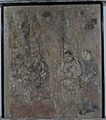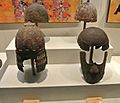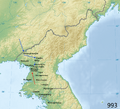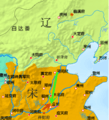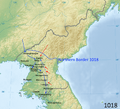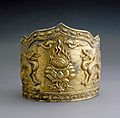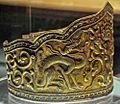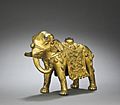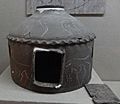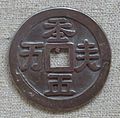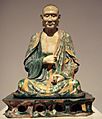Liao dynasty facts for kids
The Liao dynasty also called Khitan empire, the was an empire in Asia. It was formed by the Yelü clan of the Khitan people after the fall of the Tang Dynasty. They ruled from 907 AD to about 1125. The first ruler was Yelü Abaoji, Khan of the steppe Khitan peoples.It was originally called the "Qidan Kingdom" until about 947. Its capital was the present day Bairin Left Banner in Inner Mongolia. Its territory included parts of Northern China, middle Mongolia, and Tianjin and Hebei to the south.
Emperors
- Liao Taizu (907–926)
- Liao Taizong (926–947)
- Liao Shizong (947–951)
- Liao Muzong (951–969)
- Liao Jingzong (969–982)
- Liao Shengzong (983–1031)
- Liao Xingzong (1031–1055)
- Liao Daozong (1055–1101)
- Tianzuo Di (1101–1125)
Images for kids
-
Rebellion of Li Jinzhong and Sun Wanrong against the Tang dynasty in 696-697
-
Khitan tomb mural in Inner Mongolia – attendants holding a musical instrument, bow and arrows, boots, and a falcon
-
Liao or Jin dynasty (1115–1234) helmets and mask
-
The King of Dongdan Goes Forth (東丹王出行圖), scroll, light colors on silk. 146.8 x 77.3 cm. National Palace Museum, Taipei. Attributed to Li Zanhua (李贊華 909–946), but possibly a later artist.
-
Khitans hunting with birds of prey, 9–10th centuries
-
The Pagoda of Fogong Temple, built by Emperor Daozong of Liao in 1056 at the site of his grandmother's family home.
-
Liao funerary mask and crown (female)
-
Gilt silver crown, excavated in 1986 from the tomb of Princess of Chen and her husband in Tongliao, Inner Mongolia.
-
Epitaph of Xiao Guanyin, the wife of Emperor Daozong of Liao, in Khitan small script
-
Depiction of Xiongnu cavalry in the Eighteen Songs of a Nomad Flute, commissioned by Emperor Gaozong of Song. While the subjects are the Xiongnu, the hairstyle depicted is distinctly Khitan, and likely based on northern steppe peoples contemporary to the Song.
-
Miniature model of a Khitan tent found in the Hadatu tomb in 1973
-
Aguda, posthumously Emperor Taizu of Jin, founder of the Jurchen Jin dynasty
-
The Tianning Temple Pagoda, a Buddhist structure built at Liao Nanjing ("Southern Capital", modern Beijing) in 1120 during the last years of the Liao dynasty
-
The Qara Khitai empire in 1160
-
The only extant manuscript in the Khitan language, Folio 9 of manuscript codex Nova N 176
-
A Liao dynasty polychrome wood-carved statue depicting Guanyin in the Water Moon pose, which raises the right knee and rests the right arm on top of it, symbolizing the divinity of the Pure land, Guanyin's personal paradise, which Guanyin puts off going to until s/he has saved humanity.
-
Luohan statue, Liao dynasty, 11th century
-
Liao era bronze figure of Gautama Buddha
-
Bronze Guanyin statue from the Chinese section of the Supreme Capital
-
Liao era painted wooden statue of Guanyin
-
Bronze statue of Guanyin, Liao dynasty, 10th century
See also
 In Spanish: Dinastía Liao para niños
In Spanish: Dinastía Liao para niños




